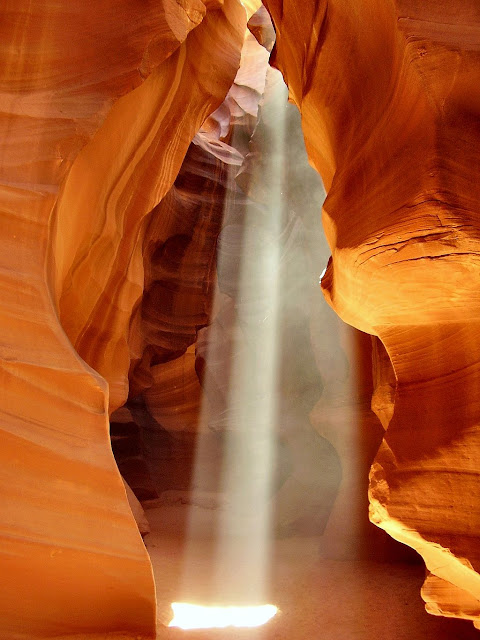Day 25 (D-36) Silverton to Moab = Goodbye Colorado
Day 25 Silverton to Moab = Goodbye Colorado
https://www.google.com/maps/dir/Silverton,+Colorado+81433,+États-Unis/Moab,+Utah+84532,+États-Unis/@38.2431799,-109.854391,8z/data=!4m14!4m13!1m5!1m1!1s0x873ee7f8d43e3f4d:0x68df382eb57dcb3f!2m2!1d-107.6645057!2d37.811941!1m5!1m1!1s0x8747e1e59ab82d8d:0xb32b17af1d5c42d!2m2!1d-109.5498395!2d38.5733155!3e0
We left Colorado to go south into New Mexico, then we returned to Colorado to visit Mesa Verde National Park and after that we took the train from Durango to Silverton. Now it's time to say good-bye to Colorado, as we travel west during the afternoon of our 7th day, into the state of Utah.
Before we leave, here's a little information about the state of Colorado to take with us:
Colorado became a state in 1876, when the United States was celebrating its first one hundred years. That's why Colorado is called The Centennial State. "Colorado" comes from Spanish, meaning "colored red". That name was given to the Colorado River because of the red sandstone soil of the region, and then it was used for the entire territory after the discovery of gold in the Pike's Peak region. First the river, then the territory and after that, it became Colorado, the 38th state to enter the Union. Today's population is over 5 million, and growing. One of Colorado's nicknames is "Colorful Colorado" because of the magnificent scenery of mountains, rivers and plains.
https://www.google.com/maps/place/Colorado+Springs,+Colorado,+États-Unis/@38.8813755,-106.9999073,7z/data=!4m5!3m4!1s0x8713412ea1e6d22b:0x418eeb92f5e86b13!8m2!3d38.8338816!4d-104.8213634
https://www.google.com/maps/dir/Silverton,+Colorado+81433,+États-Unis/Moab,+Utah+84532,+États-Unis/@38.2431799,-109.854391,8z/data=!4m14!4m13!1m5!1m1!1s0x873ee7f8d43e3f4d:0x68df382eb57dcb3f!2m2!1d-107.6645057!2d37.811941!1m5!1m1!1s0x8747e1e59ab82d8d:0xb32b17af1d5c42d!2m2!1d-109.5498395!2d38.5733155!3e0
We left Colorado to go south into New Mexico, then we returned to Colorado to visit Mesa Verde National Park and after that we took the train from Durango to Silverton. Now it's time to say good-bye to Colorado, as we travel west during the afternoon of our 7th day, into the state of Utah.
Before we leave, here's a little information about the state of Colorado to take with us:
Colorado became a state in 1876, when the United States was celebrating its first one hundred years. That's why Colorado is called The Centennial State. "Colorado" comes from Spanish, meaning "colored red". That name was given to the Colorado River because of the red sandstone soil of the region, and then it was used for the entire territory after the discovery of gold in the Pike's Peak region. First the river, then the territory and after that, it became Colorado, the 38th state to enter the Union. Today's population is over 5 million, and growing. One of Colorado's nicknames is "Colorful Colorado" because of the magnificent scenery of mountains, rivers and plains.
Colorado's flag
Two more states for us to visit. Here is a 2018 population comparison before we enter Utah.
Colorado: 5,696,000
Utah: 3,161,000
Arizona: 7,172,000
(New Mexico, as we saw on Day 9 --> 2,100,000)
It's time to go west now, to the city of Moab in Utah.
(New Mexico, as we saw on Day 9 --> 2,100,000)
It's time to go west now, to the city of Moab in Utah.
More later. "See you tomorrow."
My best,
Jane
______________________
______________________
--sandstone = http://www.wordreference.com/enfr/sandstone
--Pike's Peak = 4,300m (14,115 feet) mountain in the center of Colorado, in the Rocky Mountains. Pike's Peak is near Colorado Springs.
Here's the google map.




Hello Jane,
ReplyDeleteI've just finished to read Willa Carther's book, 'Death comes for the Archbishop", very well written and documented, a true gem, I warmly recommend ! The places we are going to visit seem more familiar to me now : Alamosa, Taos, Santa Fe, the Pueblos, Spanish missions of New Mexico, and last but not least (it could have been a sequel), Pike's Peak in Colorado where the 2nd hero is sent to create another human adventure at that time of the Gold Rush when everything had to be built. The characters are sketched out perfectly, Indians, Mexicans, Europeans and newly Americans as well. Thank you for sharing with us all these information from this part of the US, in history and in landscape. Carmela